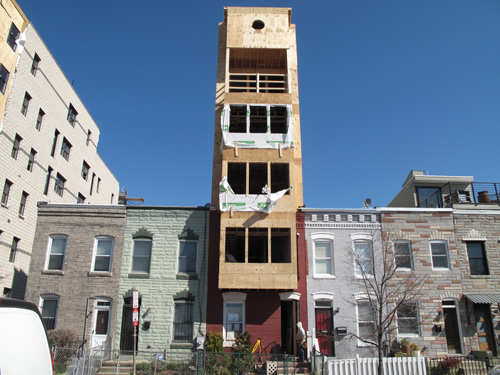
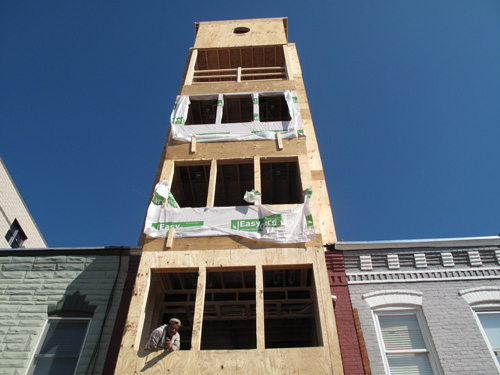
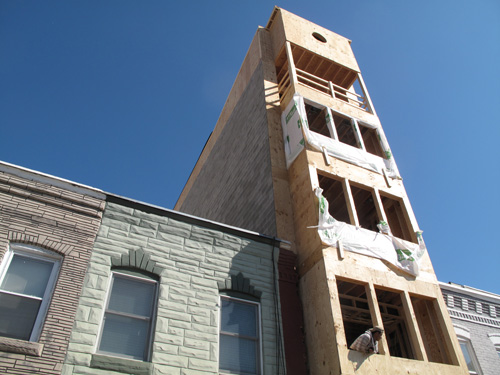
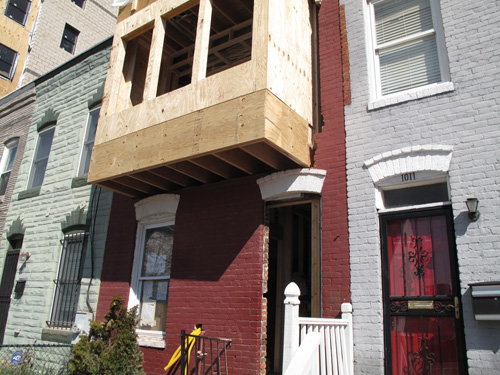
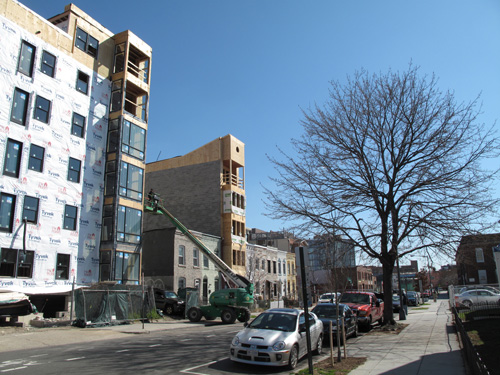
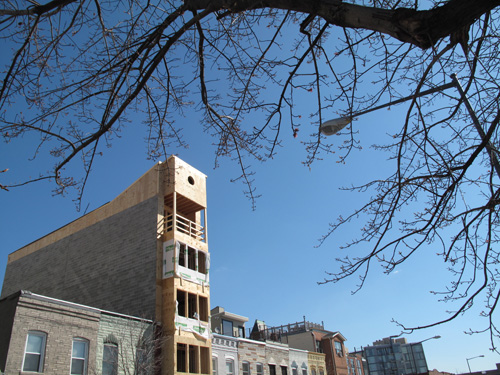
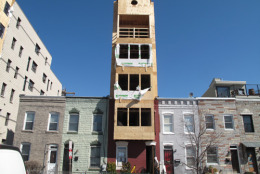
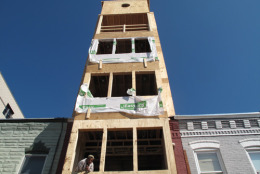
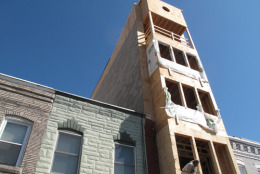
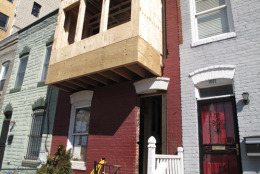
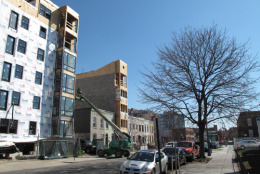
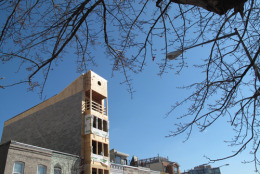
Dick Uliano, wtop.com
WASHINGTON — Some neighbors complain that a once quaint row house has become an eyesore, towering above the houses that share the block after the owner added three and a half stories on top.
Indeed, the building under construction at 10th and V Streets NW does stick out like a sore thumb. It sits among eight two-story row houses and the upward construction rises 60 feet.
“It is very odd,” says Ali Hornarkar, an architect who lives around the corner.
The construction project is so tall and narrow, it worries Aderaw Kassa, who lives in one of the row houses three doors away.
“It’s kind of scary when you see, because if some hurricane or earthquake happens, it might fall either side,” Kassa says.
But the owner of the project, Kevin Falkner of Equity Resource LLC, insists the building is safe from high wind and is being constructed within zoning standards.
“This is a pretty old house, it’s about a hundred years old, we actually put a steel-reinforced frame from the bottom all the way to the top. … It’s not going to go anywhere,” Falkner says.
The project owner also points out that while the building looks odd among the smaller row houses, it’s all legal.
“We applied for our permits at the (DC) Department of Consumer and Regulatory Affairs and we’ve got the proper permits to do a three-unit condominium building in this block,” Falkner says.
Once completed, he expects to sell each condominium in the $400,000 range, he says.
The neighborhood in the Arts Overlay District of the city is changing. It’s been zoned for high-density housing. A few doors away, and old gas station is being developed into a 31-unit apartment building.
“The area has taken a turn and all the envelopes are being pushed,” Hornarkar says. He wishes the city had not changed the zoning for the block, but instead kept the 30 foot height limit which still applies to buildings across the street. The block stretches to U Street, which is designated a historic district.
But not all the neighbors object to the change.
David Evans, a filmmaker and photographer who lives in a newly-constructed condominium in the neighborhood likes what he sees.
“I believe in urban density, I believe it protects green lands outside the city centers,” he says.
Evans agrees the project looks strange sticking up among the short row houses, but he believes that will change with time.
“This is the first one, so yeah, it looks a bit strange. But I’d like to see the whole block go that way,” Evans adds. He’s also been inside the construction project.
“The top two stories are a single unit and it’s spectacular, I’d live there in a heartbeat,” he says.
While the project towers above the other seven row houses that share the same side of the block, Falkner, the project owner, believes the owners of the other row houses will follow suit in a couple of years and build up.
“It’s gonna be good for D.C., D.C.’s going to get more taxable units and the city will grow,” he says.
But whether the little row houses grow along side the tall condo remains to be seen, according to Hornarkar.
“You can’t force everybody else to develop,” he says. “You can’t expect all your neighbors to do the same.”
Follow @WTOP on Twitter.







